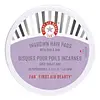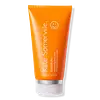What's inside
What's inside
 Key Ingredients
Key Ingredients

 Benefits
Benefits

 Concerns
Concerns

 Ingredients Side-by-side
Ingredients Side-by-side

Water
Skin ConditioningPolysorbate 20
EmulsifyingGlycerin
HumectantHamamelis Virginiana Water
AstringentGlycolic Acid
BufferingSalicylic Acid
MaskingSodium Hydroxide
BufferingCamellia Sinensis Leaf Extract
AntimicrobialGlycyrrhiza Glabra Root Extract
BleachingChrysanthemum Parthenium Extract
Skin ConditioningAloe Barbadensis Leaf Juice
Skin ConditioningSodium PCA
HumectantBisabolol
MaskingPhenoxyethanol
PreservativePotassium Sorbate
PreservativeSodium Benzoate
MaskingBenzoic Acid
MaskingTetrasodium EDTA
Citric Acid
BufferingWater, Polysorbate 20, Glycerin, Hamamelis Virginiana Water, Glycolic Acid, Salicylic Acid, Sodium Hydroxide, Camellia Sinensis Leaf Extract, Glycyrrhiza Glabra Root Extract, Chrysanthemum Parthenium Extract, Aloe Barbadensis Leaf Juice, Sodium PCA, Bisabolol, Phenoxyethanol, Potassium Sorbate, Sodium Benzoate, Benzoic Acid, Tetrasodium EDTA, Citric Acid
Water
Skin ConditioningCetyl Ricinoleate
EmollientIsostearyl Palmitate
EmollientDimethicone
EmollientSqualane
EmollientLactic Acid
BufferingGlyceryl Stearate
EmollientPEG-100 Stearate
Propanediol
SolventGlycolic Acid
BufferingMyristyl Alcohol
EmollientCyclopentasiloxane
EmollientSodium Hydroxide
BufferingLactobacillus/Pumpkin Fruit Ferment Filtrate
Skin ConditioningLeuconostoc/Radish Root Ferment Filtrate
AntimicrobialBromelain
Skin ConditioningPapain
Skin ConditioningOpuntia Ficus-Indica Fruit Extract
Skin ConditioningGlycerin
HumectantSaccharomyces Cerevisiae Extract
Skin ConditioningPolysilicone-11
Citrus Aurantium Bergamia Fruit Oil
MaskingAniba Rosodora Wood Extract
MaskingCitrus Aurantium Dulcis Peel Oil
MaskingGeranium Maculatum Oil
MaskingTocopheryl Acetate
AntioxidantPhenoxyethanol
PreservativePolyacrylate Crosspolymer-6
Emulsion StabilisingMyristyl Glucoside
CleansingCyclohexasiloxane
EmollientPEG-40 Stearate
EmulsifyingXanthan Gum
EmulsifyingEthylhexylglycerin
Skin ConditioningDisodium EDTA
Maltodextrin
AbsorbentT-Butyl Alcohol
PerfumingCitronellol
PerfumingBenzyl Benzoate
AntimicrobialCitral
PerfumingLimonene
PerfumingLinalool
PerfumingGeraniol
PerfumingCI 75810
Cosmetic ColorantWater, Cetyl Ricinoleate, Isostearyl Palmitate, Dimethicone, Squalane, Lactic Acid, Glyceryl Stearate, PEG-100 Stearate, Propanediol, Glycolic Acid, Myristyl Alcohol, Cyclopentasiloxane, Sodium Hydroxide, Lactobacillus/Pumpkin Fruit Ferment Filtrate, Leuconostoc/Radish Root Ferment Filtrate, Bromelain, Papain, Opuntia Ficus-Indica Fruit Extract, Glycerin, Saccharomyces Cerevisiae Extract, Polysilicone-11, Citrus Aurantium Bergamia Fruit Oil, Aniba Rosodora Wood Extract, Citrus Aurantium Dulcis Peel Oil, Geranium Maculatum Oil, Tocopheryl Acetate, Phenoxyethanol, Polyacrylate Crosspolymer-6, Myristyl Glucoside, Cyclohexasiloxane, PEG-40 Stearate, Xanthan Gum, Ethylhexylglycerin, Disodium EDTA, Maltodextrin, T-Butyl Alcohol, Citronellol, Benzyl Benzoate, Citral, Limonene, Linalool, Geraniol, CI 75810
 Reviews
Reviews

Ingredients Explained
These ingredients are found in both products.
Ingredients higher up in an ingredient list are typically present in a larger amount.
Glycerin is already naturally found in your skin. It helps moisturize and protect your skin.
A study from 2016 found glycerin to be more effective as a humectant than AHAs and hyaluronic acid.
As a humectant, it helps the skin stay hydrated by pulling moisture to your skin. The low molecular weight of glycerin allows it to pull moisture into the deeper layers of your skin.
Hydrated skin improves your skin barrier; Your skin barrier helps protect against irritants and bacteria.
Glycerin has also been found to have antimicrobial and antiviral properties. Due to these properties, glycerin is often used in wound and burn treatments.
In cosmetics, glycerin is usually derived from plants such as soybean or palm. However, it can also be sourced from animals, such as tallow or animal fat.
This ingredient is organic, colorless, odorless, and non-toxic.
Glycerin is the name for this ingredient in American English. British English uses Glycerol/Glycerine.
Learn more about GlycerinGlycolic Acid is arguably the most famous alpha hydroxy acid (AHA) with tons of research backing its benefits.
It is found naturally in sugar cane but the form used in skincare is usually synthetic for purity and stability.
Glycolic acid removes the top layer of dead skin cells to allow newer and fresher ones to emerge.
AHAs work by breaking down the structural “glue” that holds old skin cells in place. When that buildup is gone, your skin can renew itself more efficiently.
Research also shows glycolic acid stimulates collagen production, helping to firm and thicken the skin over time. This is one of its biggest advantages over other AHAs.
Overall, glycolic acid helps with:
Fun fact: Glycolic acid boosts skin hydration by helping it produce molecules that increase hyaluronic acid naturally.
To work best, glycolic acid products should have a pH between 3-4 (that’s where exfoliation is most effective but still gentle on skin).
The pH and concentration of a product are key to its effectiveness:
It is normal to feel a slight stinging sensation when using glycolic acid. This usually fades as your skin adjusts.
Because glycolic acid has the smallest molecular size in the AHA family, it can penetrate deeper, which enhances its effectiveness but also makes it more likely to irritate sensitive skin.
If your skin is very sensitive or prone to rosacea, glycolic acid may be too strong; in that case, try milder options like lactic acid or a PHA instead.
Recent studies suggest glycolic acid might even help protect against UV damage. But don’t skip sunscreen! Freshly exfoliated skin is more sensitive to the sun.
Glycolic acid is a skincare superstar. It smooths, brightens, hydrates, and firms the skin. Unless you’re highly sensitive, it’s well worth adding to your routine.
Read more about some other popular AHA's here:
Learn more about Glycolic AcidPhenoxyethanol is a preservative that has germicide, antimicrobial, and aromatic properties. Studies show that phenoxyethanol can prevent microbial growth. By itself, it has a scent that is similar to that of a rose.
It's often used in formulations along with Caprylyl Glycol to preserve the shelf life of products.
Sodium Hydroxide is also known as lye or caustic soda. It is used to adjust the pH of products; many ingredients require a specific pH to be effective.
In small amounts, sodium hydroxide is considered safe to use. However, large amounts may cause chemical burns due to its high alkaline.
Your skin has a natural pH and acid mantle. This acid mantle helps prevent harmful bacteria from breaking through. The acid mantle also helps keep your skin hydrated.
"Alkaline" refers to a high pH level. A low pH level would be considered acidic.
Learn more about Sodium HydroxideWater. It's the most common cosmetic ingredient of all. You'll usually see it at the top of ingredient lists, meaning that it makes up the largest part of the product.
So why is it so popular? Water most often acts as a solvent - this means that it helps dissolve other ingredients into the formulation.
You'll also recognize water as that liquid we all need to stay alive. If you see this, drink a glass of water. Stay hydrated!
Learn more about Water